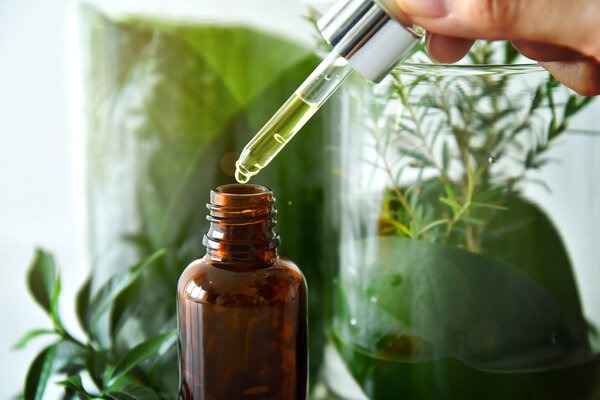L’Oréal’s Vision of the Beauty of the Future
Biosciences

March 6, 2021, 10:58 am
As part of its permanent quest to offer consumers products that are ever more effective, safe and respectful to the environment, L’Oréal commits to an important transformation of its Research & Innovation through adopting a ‘Green Sciences’ (Biosciences) approach. By 2030, 95% of its ingredients will be derived from renewable plant sources, abundant minerals, or circular processes; and 100% of formulas will be respectful of the aquatic environment.
This move comes at a time when protecting the planet is an absolute necessity, and the Covid-19 pandemic is driving heightened demand for products that are both good for the health and safety, of the environment. It is against this backdrop that L’Oréal is opening a new chapter in R&I by making nature a driving force in creating renewable alternatives to petroleum-based ingredients.
The Group will draw on recent advances in Green Sciences to enable the sustainable cultivation of ingredients and extract the best that nature has to offer through cutting-edge technological processes. Already by 2020, 80% of the Group’s raw materials are easily biodegradable, 59% are renewable, 34% are natural or of natural origin. 29% of the ingredients used in L’Oréal formulas were developed according to the principles of Green Chemistry.
According to Nicolas Hieronimus, L’Oréal Deputy Chief Executive Officer, in charge of Divisions: “With Green Sciences we are entering a new chapter for L’Oréal Research & Innovation, which has been a key driving force behind the company since its creation. Our ambition is that by 2030 we will be able to offer women and men around the world increasingly effective, safe cosmetics that respect the environment.”
To achieve this transition, L’Oréal has rallied its full range of resources in Green Sciences, including recent advances in agronomics, together with new developments in biotechnology, Green Chemistry, formulation science, and modeling tools. The Group is also building a range of strategic partnerships with universities, start-ups, and its own raw material suppliers.
Barbara Lavernos, Chief Research, Innovation and Technology Officer reinforces: “Thanks to Green Sciences we are able to take up this ambitious scientific and technical challenge. This virtuous, circular economy-based approach will allow us to achieve new levels of performance and discover unprecedented cosmetic benefits without compromising on quality or safety, in the service of beauty that is respectful of the planet.”
Ever-greater transparency empower consumers to make responsible choices
L’Oréal remains committed to transparency. The Group continues to launch new initiatives to further improve the information and dialogue with consumers, empowering them to make choices that reflect their values.
• L’Oréal pursues this pledge of transparency through its “Inside Our Products” website. Launched in March 2019, the site answers questions from the public about the ingredients used in formulas and the composition of its products. The platform covers nearly 1,000 listed ingredients and is now available across 45 countries in eight languages (FR/EN/CN/GER/SP/IT/RUS/PORT). Built on scientific advances, this content is being rolled out incrementally across the websites of leading Group brands (L’Oréal Paris, Garnier, La Roche-Posay, Maybelline, Redken, Essie, Kérastase, Yves
Saint Laurent…).
• An information campaign highlighting the environmental and social impact of cosmetic products was also launched in June 2020 as part of the L’Oréal for the Future programme. The initiative is being deployed around the globe in conjunction with Garnier and will gradually encompass all Group brands.
• In March 2021, a drive to raise awareness of the Inside Our Products initiative will be organised on social media platforms such as Facebook, Twitter, Instagram, Linked In, and YouTube in some 20 countries, giving consumers a chance to talk to researchers. A pilot scheme held in France in January 2021 led to fruitful exchanges with internet users.
Continuous safety improvements for consumers and the environment
The safety and potential environmental impact of our products are at the heart of the commitments made by L’Oréal. The Group pioneered alternatives to animal testing by creating reconstructed skin models to assess product safety. L’Oréal stopped testing its products on animals in 1989, 14 years before such practices were outlawed. The Group has also taken steps to raise awareness of these alternative methods in China, where the authorities put a stop to animal testing for domestically produced “non-functional” cosmetics in 2014. Incremental progress is ongoing: this year, the government also dropped its requirement that foreign imports of these cosmetics be tested on animals, subject to a certificate proving compliance with Good Manufacturing Practices.
L’Oréal continues to improve the environmental profile of its formulas. In 1995, it set up a research laboratory to measure and model the impact of its products on ecosystems (water and soil) and biodiversity. As part of its L’Oréal for the Future programme, by 2030, the Group aims to ensure that 95% of its ingredients are bio-sourced, derived from abundant minerals or circular processes, with 100% of its formulas assessed using its environmental test platform to ensure they do no harm to the diversity of coastal and freshwater aquatic ecosystems.










